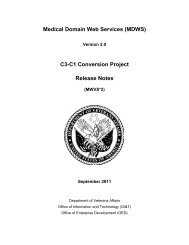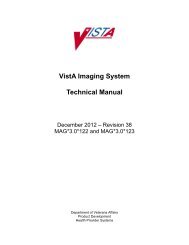Optimal Temperature for Cardioplegia During Coronary Artery ...
Optimal Temperature for Cardioplegia During Coronary Artery ...
Optimal Temperature for Cardioplegia During Coronary Artery ...
Create successful ePaper yourself
Turn your PDF publications into a flip-book with our unique Google optimized e-Paper software.
OPTIMAL TEMPERATURE FOR CARDIOPLEGIA FINAL REPORT<br />
CABG Outcomes<br />
Large data set analyses have identified a core set of patient-related variables that<br />
predict outcome probabilities during CABG hospitalization (ACC/AHA, 1999).<br />
Probabilities <strong>for</strong> death, stroke, and deep sternal wound infection range from 0.4% to<br />
28%, 0.3% to 7%, and 0.4 to 7%, respectively. These rates depend on patient<br />
characteristics such as age, sex, urgency of surgery, and other diseases, and the<br />
general level of heart function. A similar set of predictive (<strong>for</strong> in-hospital mortality)<br />
patient characteristics was identified from data on 12,712 VA patients who had received<br />
CABG: general patient and heart function; priority (urgency) of surgery; number and<br />
anatomic location of narrowed coronary arteries; need <strong>for</strong> intra-aortic balloon pump prior<br />
to surgery; intravenous nitroglycerin use; recent myocardial infarction; and certain<br />
characteristics of the electrocardiogram and lung examination (Grover, 1993).<br />
Cardiopulmonary Bypass<br />
While the heart is stopped during CABG, blood flow is maintained to the remainder of<br />
the body by cardiopulmonary bypass (CPB) using a pump oxygenator. CPB maintains<br />
blood flow to most of the body, but flow through the coronary arteries is suspended <strong>for</strong><br />
the duration of the procedure, depriving the heart muscle, or myocardium, of its blood<br />
and oxygen supplies. These supplies are re-established when the procedure is<br />
completed, the clamp on the aorta is removed, CPB is stopped, and the heart resumes<br />
beating, thus restoring an anatomically and physiologically normal flow of blood through<br />
the heart and the rest of the body.<br />
Defining the optimal method <strong>for</strong> protecting the myocardium from irreversible<br />
damage (“myocardial protection”) during this temporary stoppage of blood<br />
supply is the central objective of the research represented by the literature<br />
reviewed here.<br />
Changes Over Time in Risk Characteristics of Patients Receiving CABG<br />
Mangano (1997) reports the rapidly escalating number of patients (to more than<br />
800,000 annually, worldwide) who have received CABG during the last 2 decades.<br />
According to Mangano, in 1997 mortality associated with CABG ranged from 1% to<br />
more than 8%, with morbidity from 1% to 28%. These rates were predicted to increase<br />
as the population continues to age and higher risk patients are selected to receive the<br />
procedure. The costs associated with adverse cardiovascular outcomes can be<br />
predicted to increase correspondingly from the $4 billion annually estimated at the time<br />
of Mangano’s publication (1997). Accordingly, therapeutic options to reduce adverse<br />
outcomes of CABG, including the manipulation of temperature during cardiopulmonary<br />
bypass, have been suggested and investigated.<br />
Chitwood (1995) summarizes: “The modern cardiac surgeon routinely has patients of<br />
advanced age with concurrent valve and coronary artery disease, major left ventricular<br />
hypertrophy, and impaired left ventricular function. Although these conditions were<br />
once relative contraindications to per<strong>for</strong>ming bypass procedures, advances in<br />
myocardial protection strategies now provide the means necessary to per<strong>for</strong>m complex<br />
cardiovascular procedures safely. Whereas systemic, topical, and infusion hypothermia<br />
VA OPCS Technology Assessment Program http://www.va.gov/vatap 4
















